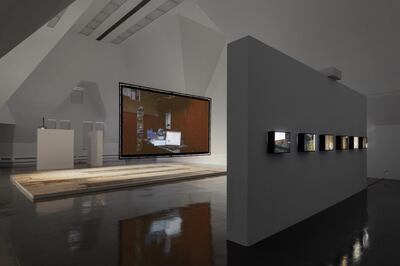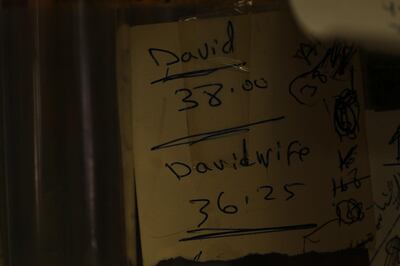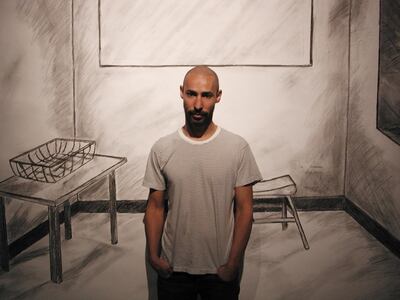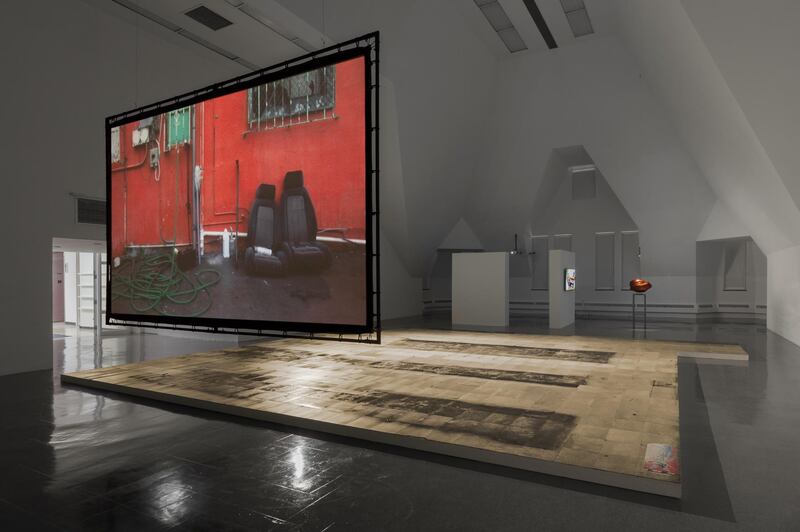Shadi Habib Allah investigates the margins. The Palestinian artist who lives in New York has made a film about the Bedouin on the Sinai Peninsula. The catacombs in Jerusalem. The interrogation rooms off the main halls of Ben Gurion airport. Imagine a camera trained on an object; then it moves a few feet left or right of centre.
Habib Allah's work is the subject of two solo shows at United States institutions the Renaissance Society, an independent space in Chicago; and the Hammer Museum in Los Angeles, in partnership with the Mophradat cultural exchange agency in Brussels. For these exhibitions he turns his focus to the American welfare system: or more specifically, the illicit economies that have emerged to navigate its failures. "I'm interested in the strategies that mimic the actual system to keep it moving," he says. "The project isn't looking at welfare directly, but the communities affected by poverty and the mechanisms they used to cope with it."
The works investigate the so-called "food deserts" that emerged because of red-lining in Miami. These establishments – corner shops in poor communities, many Arab-run – offer one prime product: cash for welfare cards.
Up until the 1990s, welfare recipients in the US used to receive aid in the form of food stamps, but the physical pieces of paper were transferred over to EBT cards – “electronic balance transfer” cards preloaded with cash. This was intended to forestall some problems associated with welfare: on the one hand, the shame that many felt digging out their coupons on the supermarket lines; and on the other, the tendency for coupons to be traded for cash. By the 2000s, EBT cards were in use across all 50 states, with a number of checks on their usage – namely, the money has to come off the cards in small increments, so the government can make sure it is being spent on food.

However, people still needed cash, Habib Allah says. He found that in Miami, people began trading the cards in an informal system of exchange, where the shopkeeper takes half, and gives the remaining half of the amount to the customer in cash. The shop then produces fraudulent transactions throughout the month for small-ticket items such as milk, fruit and vegetables, to keep up the pretence for the government that the money is being correctly spent.
For his show in Chicago, Habib Allah photographed the time sheets by which the shop owners track the fake purchases, and installed a dusty, dirty tiled floor that he took from one of the Miami shops. It sits in the middle of the space and, stripped of its shelves, it looks suddenly naked: there are areas relatively clean where the shelves once were, edged with lines where dust accumulated, and long esplanades of scuff marks and wear and tear. It begs to be read as a legible object, like a chess board with its own story to tell. "There's an aesthetics of impoverishment," Habib Allah says. "All these stores have begun to look alike. It's an invitation not to buy – a code for welfare transactions."

The look itself of the stores, that is, has been affected by their black-market role. When Habib Allah and I met, in a Ramallah cafe, he patiently explained welfare dynamics across the US. Recent rezoning allowed chain stores to move in to Miami neighbourhoods and offer goods at lower prices. Consequently, the primary function of the local outlets became their willingness to trade welfare cards for cash. If stock ran out on the shelves, nothing replaced it. Dust accumulated and no one bothered to clean. The result: the dust-marked floor, and yawning shelves.

For Habib Allah, the project, which he also explored at the Hammer in a video featuring Oprah Winfrey, is not just about economic politics in the US. He got to know the shop-owners and their families when he stopped in Miami while travelling the Sates before college. He returned intermittently to Miami over the next few years while at university in Jerusalem, and kept in touch after he won a scholarship to Columbia University’s MFA programme in New York. He knows the families by now, he says, and every time he returns he can recognise resemblances in new arrivals. This feeling appears, too, in his work: an admiration for a place where personal relations trump financial imperatives.
"If someone needs $20, you give it to them," he says. "Even if it's your budget for the week, what can you do? You have to give them the money. It's not like that everywhere. It's a community."
Shadi Habib Allah: Put to Rights is at the Renaissance Society in Chicago until November 4. Hammer Projects: Shadi Habib Allah is on at the Hammer in Los Angeles until January 20, 2019
__________________________
Read more:
An exploration of Lebanese identity through street art
Inside 'I am Ashurbanipal King of the World, King of Assyria' at the British Museum
Syria's ancient heritage on show again: National Museum of Damascus reopens doors
__________________________











